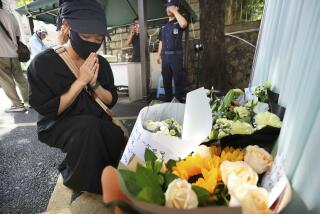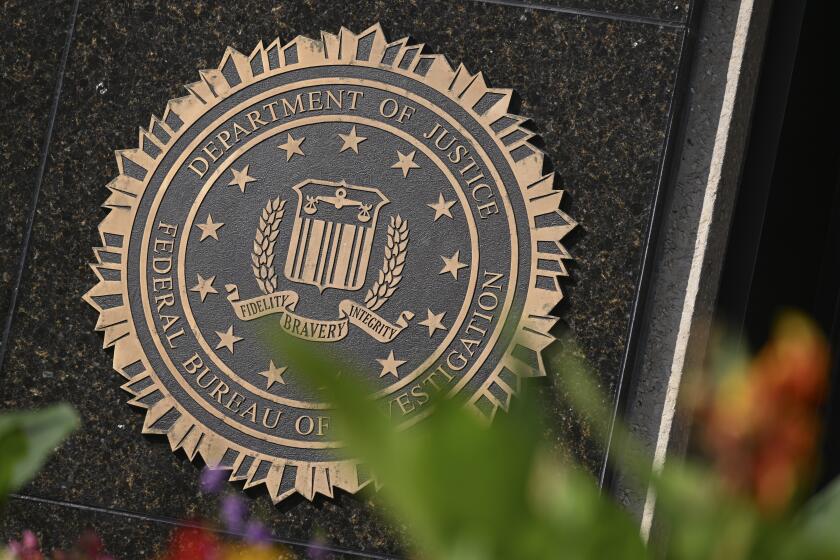Solved: the mystery of Everett Ruess
His name might not rank with Amelia Earhart’s and Judge Crater’s, but the disappearance of Everett Ruess has been an enduring legend of the Southwest for 75 years.
Only 20 at the time of his disappearance, the writer, artist and environmentalist who has been compared to a young John Muir was last seen near Utah’s Davis Gulch in 1934. Numerous search parties failed to find him, and authors have speculated widely about his demise. Many believed he drowned in the Colorado River.
Modern forensic technology, however, has shown that a weathered skeleton discovered last year by a young Navajo investigating an old family secret is that of Ruess, who was apparently killed by Ute teenagers, Colorado researchers said Thursday.
“I am pretty well convinced that this has got to be Everett,” said author W.L. “Bud” Rusho of Salt Lake City, who has written extensively about Ruess.
Questions remain about the fate of Ruess’ journals, box camera and other belongings, but the discovery caps a story that has been the subject of books, documentaries and abiding speculation.
Ruess had roamed the Southwest for four years, sending home elegant letters to his family, composing poems, and producing intricate wood carvings. Despite his young age, he was a confidant to Western artists, including Dorothea Lange and Ansel Adams.
In his last letter to his family, Ruess wrote: “As to when I shall visit civilization, it will not be soon, I think. I prefer the saddle to the street-car, the star-sprinkled sky to a roof.”
His slaying was apparently witnessed by a young Navajo man, Aneth Nez. After a 37-year silence, Nez told his granddaughter, Daisy Johnson, that he had watched from Comb Ridge near the Utah-Arizona state line as three Utes killed a young white man. Nez asked her to take him to the site above Chinle Wash where he had buried the body in a crevice. Memories of the event had been haunting him, and he wanted to retrieve a lock of hair for a healing ceremony.
Last year, Johnson told her younger brother Denny Bellson about the episode and took him to the area of the grave. In a telephone news conference arranged by National Geographic Adventure magazine, where the new findings are being reported, Bellson said he found the grave site in an hour and a half.
“When I looked in the crevice and saw the top of the skull there, I knew it was him,” Bellson said. Also at the site was his grandfather’s saddle, which had been left behind because it had gotten bloody.
Bellson called in the FBI, which investigates homicides on Native American territory. After a cursory investigation at the site in which agents shattered the skull, the FBI concluded the victim was a Navajo “and that I was wasting their time,” he said.
But the remains were excavated by Ron Maldonado, the Navajo Nation’s supervisory archaeologist, and sent to anthropologist Dennis Van Gerven of the University of Colorado at Boulder. Van Gerven had never heard of Ruess and was “actually not interested,” he said, but persistent inquiries from David Roberts, a contributing editor at National Geographic, persuaded him to examine them.
He and graduate student Paul Sandberg concluded that the bones belonged to a white victim, age 20 to 22, who stood about 5-foot-8. After reconstructing the skull and photographing it, they superimposed the image on pictures of Ruess taken by Lange and found them to be a perfect match, particularly the teeth.
“Everybody’s teeth are unique in size, shape and spacing,” Sandberg said. “Nothing excluded Ruess.”
The team then called in molecular biologist Kenneth Krauter, also of the University of Colorado, who extracted DNA from a femur and compared it to DNA from four of Ruess’ living nieces and nephews.
Examining about 600,000 sites across the entire genome, he found matches at about a quarter of the locations, the proportion expected for nieces and nephews. As a control, he ran the DNA against samples from 50 people chosen at random and found less than a 1% match.
“The evidence is irrefutable that the bones are from a close relative of the four,” Krauter said. “Combined with the facial reconstruction, that makes this an irrefutable case.”
But some mysteries linger. Ruess’ two burros were found 60 miles from the grave. And he had told his family he was heading southwest from Escalante, Utah, yet was found due east of there.
“There are questions we will never know the answers to,” Rusho said.
--
More to Read
Sign up for Essential California
The most important California stories and recommendations in your inbox every morning.
You may occasionally receive promotional content from the Los Angeles Times.










